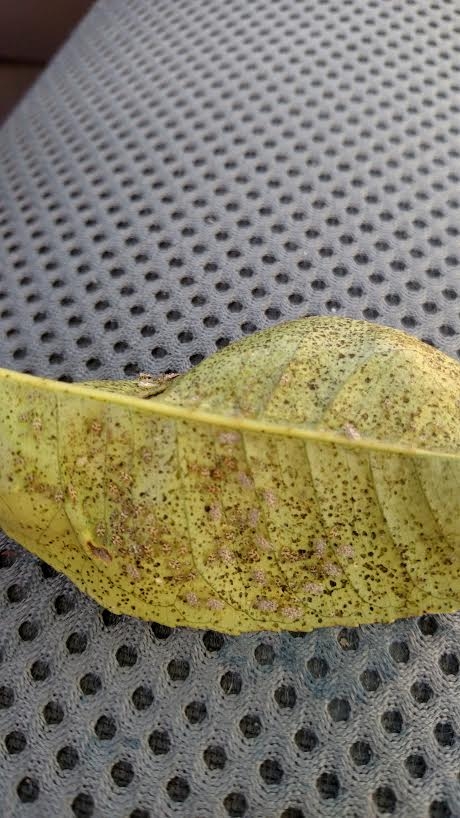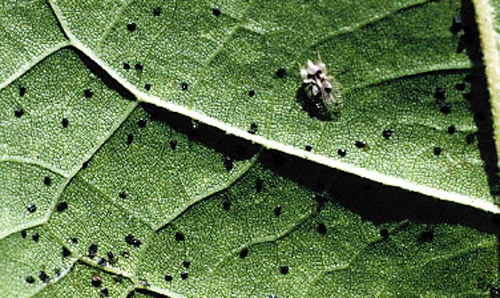Just when you thought you had seen as much citrus infestation as you were likely to seek, in comes Jane Delahoyde, a Pest Control Advisor in Ventura with some lace bugs on lemons. Lace bugs are pretty specific to a host species. So there is avocado lace bug that goes to avocados (and camphor which is somewhat related). There is alder lace bug that goes to alder. Birch lace bug that goes to ………….birch, and so on. There are a lot of native lace bugs that go to native plant species like ceanothus, toyon and sycamore. Over a dozen species of lace bugs (family Tingidae) occur in California. Each feed on one or a few closely related plant species. Hosts include alder, ash, avocado, coyote brush, birch, ceanothus, photinia, poplar, sycamore, toyon, and willow.
Adult lace bugs are about 1/8 inch (3 mm) long with an elaborately sculptured dorsal (upper) surface. The expanded surfaces of their thorax and forewings have numerous, semitransparent cells that give the body a lacelike appearance, hence the name "lace bugs." The wingless nymphs are smaller, oval, and usually dark colored with spines. Adults and nymphs occur together in groups on the underside of leaves.
Native species named after their host plants include the California Christmas berry tingid (Corythucha incurvata), ceanothus tingid (Corythucha obliqua), and western sycamore lace bug (Corythucha confraterna). The introduced avocado lace bug (Pseudacysta perseae) is a pest of avocado (Persea americana) and camphor tree (Cinnamomum camphora).
Adult lace bugs are about 1/8 inch long with an elaborately sculptured thorax and forewings that form an expanded cover over their body. The adult thorax and forewings have tiny clear cells that form a lacelike covering, hence the name "lace bugs." Many lace bugs are multicolored with a distinctive, species-specific pattern of a dark, pale, and clear lacelike areas. The wingless nymphs are smaller, oval, and commonly have body spines. Adults and nymphs occur together in groups on the underside of leaves.
Lace bug adults and nymphs feed on the underside of leaves by sucking fluids from plants' photosynthetic tissues. This causes pale stippling and bleaching that can become very obvious on the upper leaf surface by mid to late summer. Adults and nymphs also foul leaves with specks of dark, varnishlike excrement; and this excrement sometimes drips onto pavement and other surfaces beneath infested plants. Certain other true bugs and thrips also produce leaf stippling and dark excrement. Mites also stipple leaves. Mite infestations usually can be distinguished by the absence of dark excrement and sometimes by the presence of mite cast skins and fine silken webbing. Examine the lower leaf surface, using a magnifying lens if necessary, to identify what type of pest is causing the damage.
Lace bug feeding is not a serious threat to plant health or survival. Prolonged high populations of lace bugs may cause premature drop of some leaves and a modest reduction in plant growth rate. On avocado premature leaf drop may lead to sunburn of some fruit and a subsequent reduction in fruit yield.
So are these lace bugs just looking for somewhere to feed when the hillsides have dried up? Are they a new species? Fortunately they don't cause much damage, and in our spraying to control Asian Citrus Psyllid, the lace bug will be controlled, as well. Keep your eyes open for it.
For more about the insect: http://www.ipm.ucdavis.edu/PMG/PESTNOTES/pn7428.html
Lace bug and damage
Lace bugs and excrement
Attached Images:

